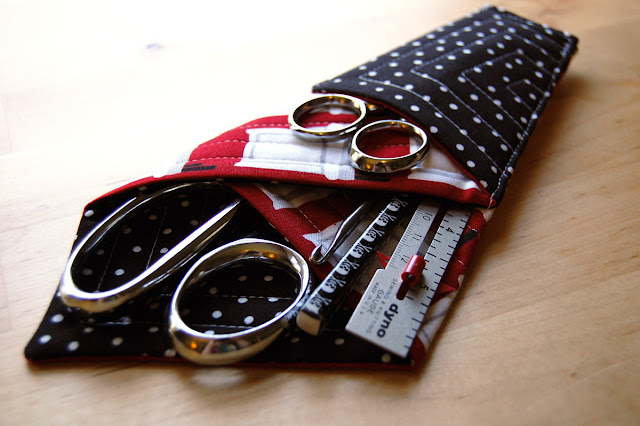The Birth of Roy G. Biv and the Invention of the Color Wheel
Sir Isaac Newton's experiments with light and prisms when he was just 24 years old and led to the birth of the mnemonic character "Roy G. Biv" and to our modern Artist's Color Wheel.
Quick back-story! Before Newton's discovery (and it would actually be another 200 years before his theory was understood and accepted), people thought the colors that appeared when light passed through a prism existed IN the prism! The theory at the time held that it was impurities in the prism (or crystal, or glass of water) that caused the colors to appear when sunlight passed through. In the centuries after Newton's discovery, color theorists and some scientists couldn't believe that all the colors of the rainbow (the visible spectrum) exist inside white light.
Looking at the rainbow made by a prism (like the illustration above), it's amazing how seamlessly the colors blend from one into another. In fact, Newton himself had a difficult time deciding how and where to dissect the rainbow. I've read that he struggled with how to separate these colors, and thought there may be as many as 11 different colors, then whittling it back down to 5. Finally, Newton settled on 7 distinct major colors in the spectrum, the number inspired by similarities Newton noted between the color scale and a musical scale (based on 7 notes). Greek mathematician Pythagoras had a total obsession with the number 7 and Newton most likely was aware of his "Harmony of the 7 Spheres" ideas.
So, as Newton reported in his 1672 New Theory of Light and Color, he named these 7 colors; red, orange, yellow, green, blue, indigo, and violet. Take the first letter of each major color, and you get the mnemonic ROY G. BIV!
These days, many people debate the inclusion of both indigo and blue, as they are both in the blue family, (Newton's "blue" being closer to our idea of cyan, and his "indigo" being our idea of a regular dark blue or even blue-violet). There is also confusion between the two major color systems, the additive system of light and the subtractive system of artist's colors. The 6 major colors of the artist's color wheel are red, orange, yellow, green, blue and violet. The 6 major colors of light are red, yellow, green, cyan, blue, and magenta. Read more about these systems here!
When you invoke the moniker "Roy G. Biv" it is specific to Newton's naming of his visual spectrum (or rainbows!). You've got to give respect to Sir Isaac Newton for bringing Roy G. Biv into existence, not to mention giving us our first version of the modern color wheel.
This may look a bit lopsided to us, but this is Newton's 1704 color circle presented in the book Opticks, in which his circular diagram of color is based directly on the widths of the colors in the visual spectrum from his earlier experiments. This included the 7 original spectral colors, with the orange and indigo slices diminished as compared to the other hues. The two most powerful concepts for artists put forth by Newton were the reordering of colors in spectral order (before Newton most colors were ordered by value, such as white/yellow/red/green/blue/black), the concept of color mixing of light (or how the main colors can be mixed to produce the other colors), and the powerful relationship of colors directly opposite each other on the wheel.
This color circle is the predecessor to our modern color wheels, in which different color systems are displayed in sets of 3, 6, or 12 colors (and sometimes more). While you may recognize some other early color wheels, such as:
Claude Boutet's color wheel (developed in conjunction with Newton) from 1706
Wilhelm von Bezold's color wheel, 1874.
Johann Wolfgang von Goethe's color wheel from 1810.
Quick back-story! Before Newton's discovery (and it would actually be another 200 years before his theory was understood and accepted), people thought the colors that appeared when light passed through a prism existed IN the prism! The theory at the time held that it was impurities in the prism (or crystal, or glass of water) that caused the colors to appear when sunlight passed through. In the centuries after Newton's discovery, color theorists and some scientists couldn't believe that all the colors of the rainbow (the visible spectrum) exist inside white light.
Looking at the rainbow made by a prism (like the illustration above), it's amazing how seamlessly the colors blend from one into another. In fact, Newton himself had a difficult time deciding how and where to dissect the rainbow. I've read that he struggled with how to separate these colors, and thought there may be as many as 11 different colors, then whittling it back down to 5. Finally, Newton settled on 7 distinct major colors in the spectrum, the number inspired by similarities Newton noted between the color scale and a musical scale (based on 7 notes). Greek mathematician Pythagoras had a total obsession with the number 7 and Newton most likely was aware of his "Harmony of the 7 Spheres" ideas.
So, as Newton reported in his 1672 New Theory of Light and Color, he named these 7 colors; red, orange, yellow, green, blue, indigo, and violet. Take the first letter of each major color, and you get the mnemonic ROY G. BIV!
These days, many people debate the inclusion of both indigo and blue, as they are both in the blue family, (Newton's "blue" being closer to our idea of cyan, and his "indigo" being our idea of a regular dark blue or even blue-violet). There is also confusion between the two major color systems, the additive system of light and the subtractive system of artist's colors. The 6 major colors of the artist's color wheel are red, orange, yellow, green, blue and violet. The 6 major colors of light are red, yellow, green, cyan, blue, and magenta. Read more about these systems here!
When you invoke the moniker "Roy G. Biv" it is specific to Newton's naming of his visual spectrum (or rainbows!). You've got to give respect to Sir Isaac Newton for bringing Roy G. Biv into existence, not to mention giving us our first version of the modern color wheel.
This may look a bit lopsided to us, but this is Newton's 1704 color circle presented in the book Opticks, in which his circular diagram of color is based directly on the widths of the colors in the visual spectrum from his earlier experiments. This included the 7 original spectral colors, with the orange and indigo slices diminished as compared to the other hues. The two most powerful concepts for artists put forth by Newton were the reordering of colors in spectral order (before Newton most colors were ordered by value, such as white/yellow/red/green/blue/black), the concept of color mixing of light (or how the main colors can be mixed to produce the other colors), and the powerful relationship of colors directly opposite each other on the wheel.
This color circle is the predecessor to our modern color wheels, in which different color systems are displayed in sets of 3, 6, or 12 colors (and sometimes more). While you may recognize some other early color wheels, such as:
Claude Boutet's color wheel (developed in conjunction with Newton) from 1706
Wilhelm von Bezold's color wheel, 1874.
Johann Wolfgang von Goethe's color wheel from 1810.
Or even Johannes Itten's color star first published in 1921; just remember - Newton's color wheel is the granddaddy of them all.
The color wheel we most often use today to find color harmonies, combinations, and relationships is the Artist's Color Wheel, otherwise known as the subtractive color system. This color system is based on Johannes Itten's methods of teaching color use and theory to students at the Bauhaus school in 1919-1923. Based on a 3-pigment primary system, this color wheel can help students learn to create new colors (so think paints - watercolors, acrylics, oil paints, or even fabric dyes). Curiously, this is not the same color system that dominates our direct daily experience with color, the additive color system of light, or how our human eyes perceive light and color. And in another place and time, I'll post in depth about the Color Theorist Frans Gerritsen, who states in his book that if you really want to create art based on the harmonies of a color wheel, the only logical system to use is the one we use to detect and perceive color - the additive system of red, blue, and green. To Gerritsen, all other color systems may have inspired countless artists and famous works of art, but as human color perception goes, they just don't follow the unbreakable laws of human vision.
In the not-so-distant past, artists working directly with pigments would exclusively study the Artists Color Wheel, honing their skills at mixing and mastering color through their selected medium. These days, Color Theory is more commonly taught to artists with the inclusion of both color systems; the subtractive system of the Artists Color Wheel, and the additive color system of light. So, let's take a closer look at each in the next few posts, and check out the similarities, differences, and how they relate to each other.










Comments